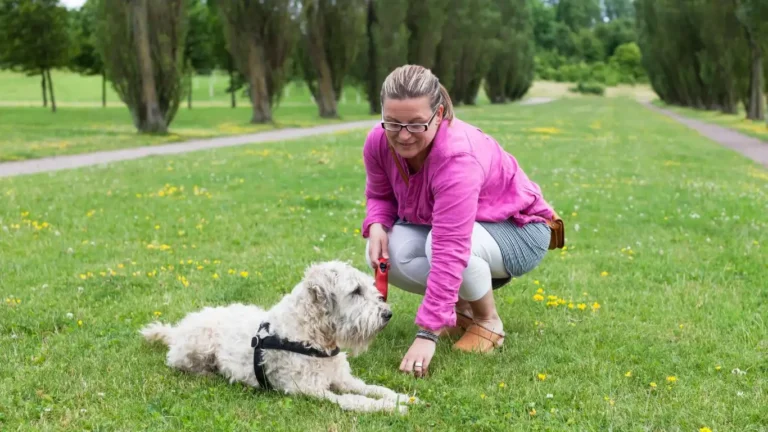How to Prevent Barking in Multi-Dog Homes for a Peaceful Household
If you’ve ever lived in a home with more than one dog, you know that barking can sometimes feel like a never-ending soundtrack. But figuring out how to prevent barking in multi-dog homes isn’t just about shushing them or hoping they’ll quiet down on their own. From my years as a Veterinary Technician specializing in nutrition and overall pet care, I’ve learned that barking often has deeper roots—sometimes linked to boredom, stress, or even dietary imbalances. When you understand those underlying reasons, calming the chorus becomes way more manageable.
Why Do Dogs Bark More in Multi-Dog Homes?

Having multiple dogs can feel like a joyful chaos, but it also means more energy and communication to manage. Dogs naturally use barking to express themselves, but when there’s more than one dog, their barks can bounce off each other and amplify. It’s like an echo chamber of excitement or alertness! But barking isn’t just about noise—it’s about what they’re trying to tell us.
Here are some reasons barking spikes in multi-dog households:
- Social facilitation: One dog barks, and others often join in just because it’s a group activity.
- Competition for attention: Dogs might bark more to get noticed by their humans.
- Heightened alertness: More dogs means more watchdogs, and that can lead to more barking at every little noise.
- Stress or anxiety: Sometimes, dogs bark because they feel unsettled or unsure in a busy environment.
How to Prevent Barking in Multi-Dog Homes: Start With Environment and Routine

One thing I’ve found from working closely with pet owners is that environment matters—big time. When dogs feel relaxed and mentally stimulated, the barking tends to take a backseat. So, before diving into training techniques, look around your home. Is there a way to create a calm, engaging space for your dogs? Are their basic needs met in a way that supports peace, not stress?
Set Up Separate Spaces
Even if your dogs get along famously, they still need their own spots to chill out. This could be a cozy crate, a soft bed in a quiet corner, or a favorite blanket. Giving them a “safe zone” can reduce the urge to bark simply because they feel overwhelmed or crowded.
Establish Predictable Routines
Dogs love knowing what’s coming next—it’s like their comfort blanket. Regular feeding, playtime, and rest schedules can reduce anxiety and help curb barking caused by frustration or boredom. Personally, I recommend sticking to consistent mealtimes and exercise sessions, which help balance their energy and mood.
Nutrition’s Role in Barking Behavior

Here’s where my background as a Veterinary Technician specializing in nutrition comes in handy: what your dogs eat can actually influence their behavior, including barking. Believe it or not, poor nutrition can lead to restlessness, irritability, and even hyperactivity—which all make barking worse.
I’ve worked with many clients whose dogs calmed down significantly once their diets were adjusted to include:
- Balanced protein and fat: To maintain energy without spikes that cause hyperactivity.
- Omega-3 fatty acids: Known for supporting brain health and calming inflammation, which can affect mood.
- Limited fillers and additives: Avoiding artificial ingredients that might cause sensitivity or allergies.
If your dogs are barking excessively, it might be worth reviewing their food labels or consulting with your vet to tweak their diets for better behavior.
Training Tips to Curb Barking in Multi-Dog Homes

Now that we’ve talked about environment and nutrition, let’s get into some practical training strategies. From my experience as a Veterinary Technician, helping pet parents create a solid training routine can be a total game-changer when it comes to how to prevent barking in multi-dog homes. It’s not about silencing your pups completely—that’s unrealistic and unfair—but about teaching them when barking is okay and when it’s time to settle down.
Use Positive Reinforcement
This one is a classic but it never gets old for a reason. Positive reinforcement means rewarding your dogs when they behave the way you want—quiet, calm, or focused—instead of yelling or punishing them for barking. Treats, praise, or even a favorite toy can work wonders. I always recommend starting small; celebrate even the brief moments of silence. Your dogs will quickly learn that being quiet gets them good stuff.
Teach the “Quiet” Command
Teaching a “quiet” command is one of the best tools you can add to your training toolkit. Here’s a simple approach I’ve used successfully:
- Wait for your dogs to bark naturally, then calmly say “quiet.”
- When they stop barking—even for just a second—immediately reward them with a treat or praise.
- Repeat this consistently, gradually increasing the time they need to be quiet before the reward.
Consistency and patience are key here. And remember, if you have multiple dogs, work with each one individually and then practice together.
Managing Triggers: What Sets Off the Barking and How to Control It

One of the biggest steps toward preventing barking is identifying what triggers it in the first place. From my years in veterinary care, I’ve noticed common triggers that set off barking sprees in multi-dog households. Once you recognize those, you can plan ways to reduce their impact.
Common Barking Triggers
- Strangers or delivery people: Many dogs naturally bark at unfamiliar faces or sounds outside.
- Other dogs or animals: The sight or sound of other dogs often excites or alarms your pack.
- Boredom or lack of stimulation: Dogs with too much pent-up energy tend to bark to entertain themselves.
- Separation anxiety: Some dogs bark excessively when left alone or separated from their pack.
Practical Tips to Manage Triggers
Here are a few things I often recommend to pet parents who want to lower barking triggered by these common causes:
- Block visual access: Use curtains, frosted windows, or baby gates to limit what your dogs see outside.
- White noise or calming music: This can drown out external sounds that trigger barking, creating a more peaceful environment.
- Increased exercise and mental enrichment: Tired dogs bark less. Puzzle toys, scent games, or longer walks work wonders.
- Gradual desensitization: Slowly expose your dogs to the triggers at a low intensity, rewarding calm behavior, and gradually increasing exposure over time.
Building a Pack Mentality That Encourages Calm

Multi-dog homes aren’t just about managing individual behaviors—they’re about creating a balanced pack dynamic. Dogs look to their humans for guidance, and when they feel secure in their roles, barking often drops naturally. As someone who’s worked hands-on with canine behavior, I can tell you that building this pack mentality is essential.
Lead With Confidence and Consistency
Dogs pick up on your energy more than you might realize. If you’re calm and consistent, your dogs will feel more secure. This means setting clear boundaries, sticking to house rules, and showing them that you’re in charge in a loving way. Trust me, they want that—it gives them peace of mind.
Encourage Social Harmony
Encourage your dogs to interact calmly by supervising play and redirecting overexcited barking before it escalates. It’s a good idea to teach and reinforce polite greetings and “settle” behaviors when the dogs are together. I’ve seen that when dogs respect each other’s space and cues, the barking reduces significantly.
Use Group Training Sessions
In my experience, working with all your dogs at once during training sessions helps create a shared understanding of expectations. This also strengthens your bond with each pup and helps reduce competition-driven barking.
Using Tools and Technology to Support Barking Prevention

Sometimes, even with the best environment and training, barking in multi-dog homes can persist. That’s when tools and technology can step in as helpful allies—not as quick fixes, but as part of a balanced approach. I’ve seen plenty of pet parents find success by integrating the right gadgets thoughtfully into their routine.
Training Collars: Proceed With Caution
Training collars, like vibration or sound-based devices, can be useful for some dogs, but they’re not a one-size-fits-all solution. From my veterinary experience, these tools should only be used under guidance and never cause discomfort or fear. When introduced carefully, they can help reinforce commands like “quiet” without yelling, especially if you’re managing multiple dogs at once.
Environmental Aids
Products like automatic feeders, timed treat dispensers, and puzzle toys are great for keeping dogs mentally stimulated, which in turn reduces boredom-induced barking. White noise machines or calming diffusers (like those releasing dog-appeasing pheromones) can help create a soothing atmosphere, especially when you’re away or during noisy times.
Monitoring Devices
For busy households, pet cameras with two-way audio can allow you to check in and gently redirect barking even when you’re not home. In my professional opinion, this kind of remote interaction can be reassuring for both you and your dogs, provided it’s used sparingly and doesn’t replace direct training.
When to Seek Professional Help

While many barking challenges can be addressed at home, sometimes it’s best to call in the experts. If barking is persistent, loud, or linked to anxiety and aggression, consulting a certified dog trainer or veterinary behaviorist can make all the difference. They can provide tailored plans that fit your unique pack dynamic and individual dog needs.
I’ve collaborated with trainers during my time as a vet tech, and what I appreciate most is how they combine behavior science with compassion. A professional’s guidance can also help you avoid common pitfalls like inconsistent training or accidentally rewarding unwanted barking.
Choosing the Right Professional
- Look for trainers certified by recognized organizations like the International Association of Canine Professionals (IACP) or Certification Council for Professional Dog Trainers (CCPDT).
- Seek veterinary behaviorists who specialize in animal psychology and have medical training.
- Ask for references or reviews from other multi-dog households.
- Make sure their training philosophy matches your values—positive reinforcement is generally the safest and most effective approach.
Final Thoughts on How to Prevent Barking in Multi-Dog Homes
Living with multiple dogs is an amazing experience filled with joy—and yes, sometimes with barking! The good news is that by combining environment tweaks, smart nutrition, targeted training, and when needed, the right tools or expert help, you can create a peaceful home where barking is balanced and controlled. The key is understanding your dogs as individuals and as a pack, and responding with patience and consistency.
From my years working hands-on with dogs and their families, I can say this: no two homes are the same, and what works wonders for one may need adjusting for another. The important part is staying committed, observing carefully, and always aiming to make life better for your furry friends.
References
- American Veterinary Medical Association
- Association of Professional Dog Trainers
- Washington State University College of Veterinary Medicine
- American Society for the Prevention of Cruelty to Animals (ASPCA)
Disclaimer
This article is intended for informational purposes only and does not substitute professional veterinary advice, diagnosis, or treatment. Always consult your veterinarian or a qualified animal behaviorist before making significant changes to your pet’s diet, training, or health care routine. Individual dog needs can vary greatly, so personalized guidance is recommended.






